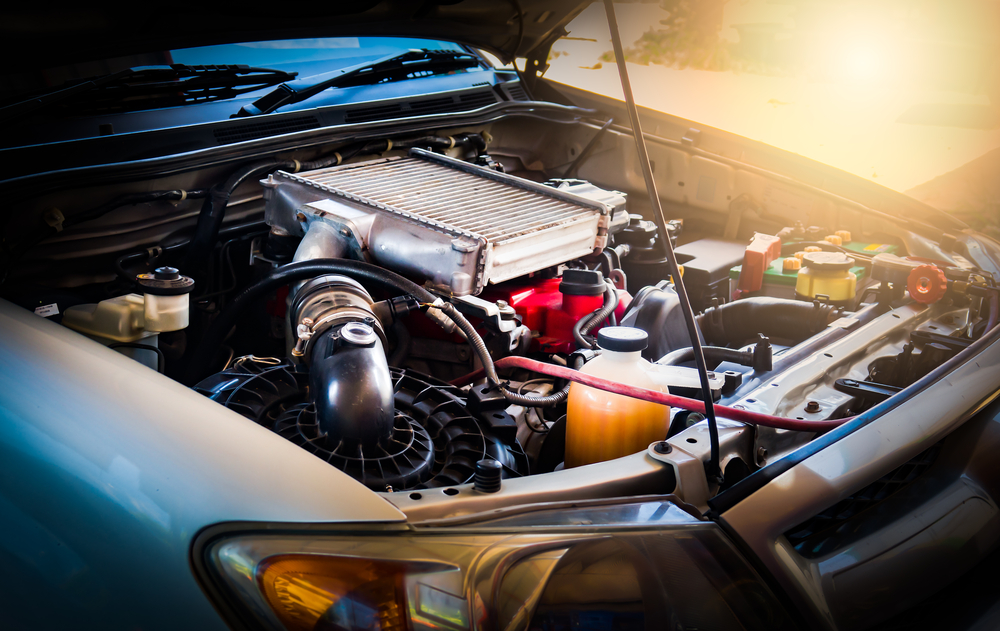Exhaust Gas Recirculation: Breathing New Life into Engine Efficiency
The roar of an engine, the thrill of acceleration, the satisfaction of a well-tuned machine – these are the hallmarks of automotive passion. Yet, beneath the surface of our beloved vehicles lies a complex dance of engineering marvels, constantly evolving to meet the demands of performance, efficiency, and environmental responsibility. One such unsung hero in this intricate ballet is Exhaust Gas Recirculation (EGR), a technology that's quietly revolutionizing the way our engines breathe and perform.

A Journey Through Time: The Evolution of EGR
The concept of EGR dates back to the 1970s when automakers first began grappling with emissions regulations. Initially, these systems were crude, often hampering performance more than they helped. Early EGR valves were simple on-off devices, activated by engine vacuum, and their operation was far from precise. As a result, many enthusiasts viewed EGR as a necessary evil, something to be tolerated rather than embraced.
However, as technology advanced, so did EGR systems. The introduction of electronic engine control units (ECUs) in the 1980s marked a turning point. Suddenly, EGR operation could be fine-tuned based on various engine parameters, allowing for more precise control and better overall performance. This evolution continued through the 1990s and 2000s, with the development of variable flow EGR valves and cooled EGR systems.
The Science Behind the Magic
At its core, EGR works by redirecting a portion of the exhaust gas back into the engine’s intake system. This might seem counterintuitive – after all, isn’t the point of an engine to expel exhaust? – but the benefits are significant. The recirculated exhaust gas acts as an inert dilutant in the combustion chamber, reducing peak combustion temperatures and slowing the chemical reaction rate during combustion.
This temperature reduction is key to EGR’s effectiveness. Lower combustion temperatures lead to a decrease in the formation of nitrogen oxides (NOx), one of the most harmful pollutants produced by internal combustion engines. Additionally, the slower combustion process can improve fuel economy by reducing pumping losses in the engine.
Modern EGR: A Symphony of Precision
Today’s EGR systems are marvels of engineering precision. Advanced electronic controls allow for real-time adjustment of EGR flow based on factors such as engine load, speed, and temperature. Some systems even incorporate multiple EGR circuits, each optimized for different operating conditions.
One of the most significant advancements in recent years has been the widespread adoption of cooled EGR systems. By passing the recirculated exhaust gas through a cooler before reintroducing it to the engine, these systems further reduce combustion temperatures and allow for higher EGR rates without compromising performance.
The Challenges of Implementation
Despite its benefits, implementing effective EGR systems is not without challenges. Engineers must carefully balance EGR rates to maximize emissions reduction without negatively impacting engine performance or durability. Too much EGR can lead to increased engine wear, reduced power output, and even misfires.
Another significant challenge is the potential for carbon buildup in the intake system. The recirculated exhaust gas can contain particulate matter and unburned fuel, which can accumulate over time, particularly in direct injection engines. This has led to the development of advanced filtration systems and cleaning procedures to maintain long-term engine health.
EGR and the Future of Internal Combustion
As the automotive industry continues to evolve, with increasing focus on reducing emissions and improving efficiency, EGR technology is poised to play an even more critical role. Advanced EGR systems are being developed that can operate at higher pressures and temperatures, allowing for even greater efficiency gains.
Some manufacturers are exploring the use of EGR in combination with other technologies, such as variable compression ratio engines and advanced thermal management systems. These integrated approaches promise to push the boundaries of what’s possible with internal combustion engines, potentially extending their viability in an increasingly electrified automotive landscape.
The Enthusiast’s Perspective
For car enthusiasts, the evolution of EGR technology represents both a challenge and an opportunity. Gone are the days when simply removing the EGR system was a go-to modification for increased performance. Today’s sophisticated engines rely on precisely calibrated EGR systems to achieve their impressive power and efficiency figures.
However, this complexity also opens up new avenues for tuning and optimization. Advanced engine management systems allow for fine-tuning of EGR rates and timing, potentially unlocking hidden performance potential while maintaining emissions compliance. As with many aspects of modern automotive technology, the key for enthusiasts lies in understanding and working with these systems rather than against them.
Conclusion: Breathing Easy into the Future
Exhaust Gas Recirculation may not be the most glamorous aspect of automotive engineering, but its impact on modern engines cannot be overstated. From its humble beginnings as a crude emissions control device to its current status as a key player in engine efficiency and performance, EGR technology has come a long way.
As we look to the future of automotive engineering, it’s clear that EGR will continue to play a crucial role in squeezing every last ounce of efficiency and performance from internal combustion engines. For enthusiasts and everyday drivers alike, this hidden champion of engine technology promises a future where power, efficiency, and environmental responsibility can coexist in perfect harmony.





